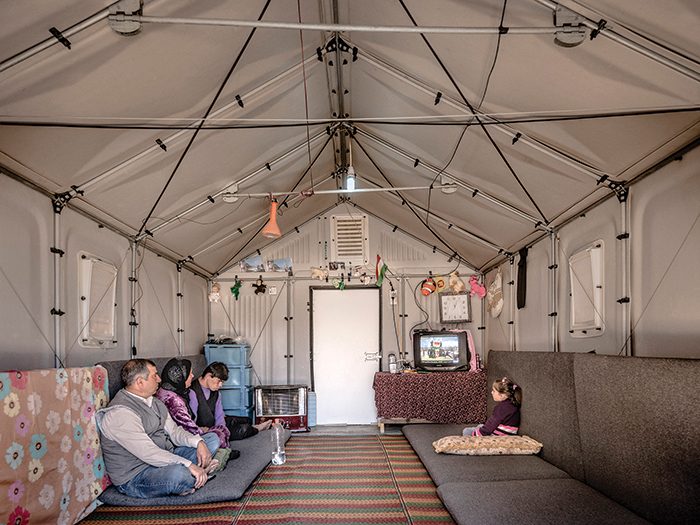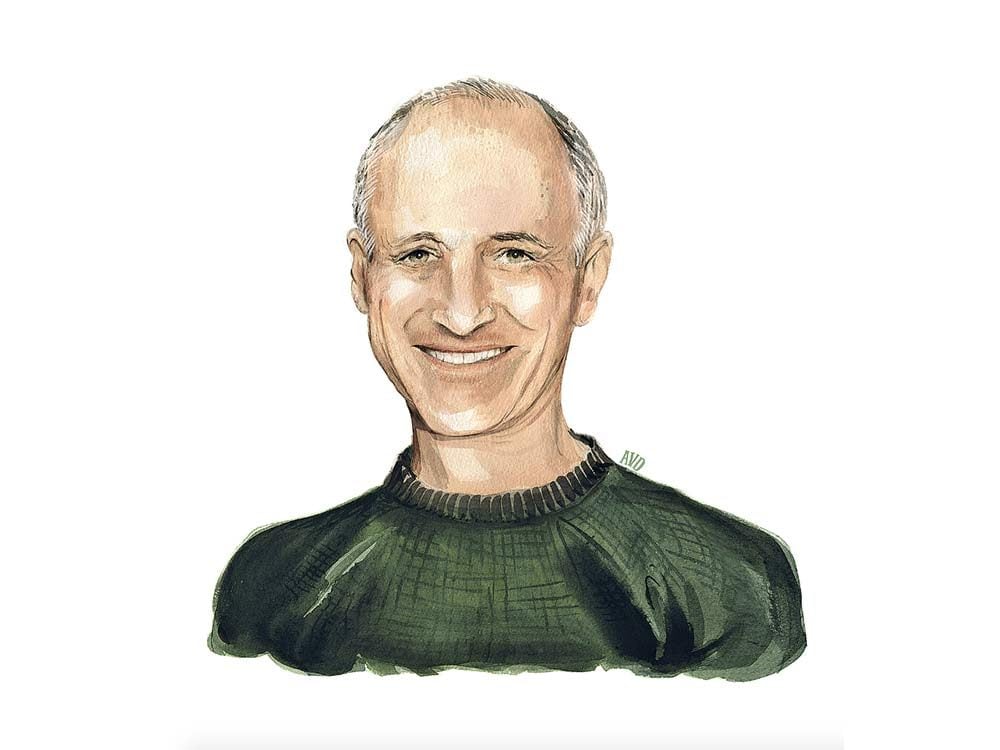
The benefits of having imaginary friends
Let’s be honest, kids are weird. And when you hear your three-year-old arguing over who gets to be the mom while playing “house” alone in the other room, you might question if you’ve done something wrong as a parent. But don’t worry, it’s perfectly normal for your child to have an imaginary friend, and it even has some benefits. (While your kids are benefitting from playing with their imaginary friend, try out these other ways to raise an intelligent child!)
One of the biggest pros is that it promotes creativity. Just think about it—you have to be a special kind of creative to carry on a conversation with an imaginary figure that doesn’t respond. Developmental psychologist Marjorie Taylor told PureWow that your child’s creativity will remain with them as they get older. Even when they stop hanging out with their “friend.”
Along with being more creative, they will also have a better developed and more diverse vocabulary as well as stronger social skills. Talking to “Sally” or “Bob” all day will allow them to practice their speech and conversation skills. Researchers at La Trobe University in Australia found that children who engage with their imaginary friends on a regular basis use more complex sentences and are more confident in everyday social situations.
There are also some benefits for the parents. If your child’s siblings aren’t around or they’re an only child, they have someone to entertain them while you take the time to chip away at your never-ending to-do list. So even though it might get old when your kids constantly ask you to set an extra plate at the table for their imaginary friend, they’ll benefit in the future from keeping them around. Having an extra member of the family can’t be that bad, the more the merrier, right?

Got a catchy caption for this photo?
Karen Entwistle of Dundas, Ontario, says, “Our family has rented a cottage on Pigeon Lake every summer since our kids were born. Our youngest, Katelyn, would sit on the slide every night, watching the sunset. Since she was two, Katelyn has wanted to be a mermaid!”
Share your funny or sweet one-liners for this photo in the comments section below or through Our Canada’s submissions site (please identify it as an entry for Caption Corner)!
Check out more Caption Corner challenges.
Don’t miss out-sign up for the Our Canada e-newsletter!

Mystery Object of the Month: What Is It?
Rose Cross of Tancook Island, Nova Scotia, writes, “This item was found in an old house that belonged to my brother-in-lawe’s family. He and my sister discovered it about four years ago, when they began renovating the 150-year-old house. It’s made of lead and weighs about 1-1/2 pounds. We’ve been wondering for years what it was used for.”
What do you think? Can you help solve this mystery?
Share your answers in the comments below or by sending them in through Our Canada’s submissions site (please identify it as an entry for “What Is It?”).
Challenge yourself to more “What Is It?” mysteries!
Don’t miss out on the best original Canadian photography—sign up for the Our Canada newsletter.
Reader’s Digest: It’s been three years since you last played in a Toronto Blue Jays uniform. Is there anything you miss about living in “the 6ix”?
Brett Lawrie: Being a baseball player here and being Canadian at the same time, I just liked the vibe of the city. This was my first opportunity to come into the big leagues, and where better than to do that than in my own backyard? Coming back to Toronto after 10 days on the road, it always felt like I was coming home.
Are there any particular road trips that standout as places you’d like to spend some more time exploring?
I like it closer to home. I like the West Coast; I’d say Seattle is a place that kind of reminds me of B.C.
And I suppose you tend to get a lot of Canadian fans out to see you when you play in Seattle?
Yeah, that’s always a crazy game, man. When the Blue Jays come to play the [Seattle] Mariners, all of the fans come down… It seems like a Blue Jays home game, especially when the gates open for batting practice. It’s packed.
Since your time in Toronto, you’ve played in Oakland with the A’s, and more recently, with the Chicago White Sox. Which ball park do you tend to feel most at home in?
As far as “being home,” I’d have to say here at the Rogers Centre. It’s where it all started for me. And I’m not going to say it’s my favourite ball park, but the venue and what it is… It’s my home park.
What’s the hardest thing about playing on the road?
Living out of your suitcase. Literally, you’re wearing the same gear all the time. You check into the hotel, you put your stuff down, you pack it up again and you’re off to a new hotel… After a while, all the hotels start to feel the same, and it wears on you.
Being a ball player is obviously hard on your body, too. Any insight on how you manage playing through pain?
It’s not so much pain… It’s more a discomfort. If you were to get hit by a pitch, you can kind of just shake that off because your adrenaline kicks in so fast. It’s the games where you body’s feeling like garbage before the first pitch that are that the hard ones. Your body really starts to ache after those long stretches without a day off, and it’s hard for that stuff to go away because you’ve just been doing it consistently all day, every day.
Is there anything about being a ball player that would surprise the fans? Like, do you do your own grocery shopping?
People think that once you’re in the big leagues, you become a new human being. I’m like, bro, I’m Canadian! I’m very basic. I eat ketchup chips! I’ll probably celebrate July 1st like a normal Canadian, and have a couple of beers with the Canadian flag hanging up somewhere! I’m cool with just being able to have what I have, and I don’t need anything other than what’s in front of me. That’s just how I’ve always been.
Speaking of the ketchup chips… That’s a Canadian delicacy you can’t get on the road, isn’t it?
Yeah, I’ve been in the United States for the past three years, and you can’t find them anywhere!
To celebrate the launch of Pringles ketchup chips in Canada, Brett Lawrie will be in Toronto on June 3 to host what could very well be the most Canadian of all world records… Beginning at 11a.m. on the corner of Front Street West and Simcoe Street, ketchup chip fanatics will suit up in ketchup-resistant coveralls, helmets and goggles, and hurl themselves down a 50-foot slippery slide covered in ketchup. The goal? To set a unique world record—”The Most Canadians to Slip Down a Ketchup Slippery Slide in One Hour!”
Reader’s Digest: Will you be joining the sliders at Saturday’s event?
Brett Lawrie: I’m going to save my slides for the big leagues!

Shelter for refugees
Design Tents haven’t evolved much over the years. They usually rely on canvas, ropes and poles and don’t last too long when they’re used on a permanent basis. But they’re still the accommodation of choice when it comes to refugee camps. And that’s what led Swedish furniture giant IKEA to apply its flatpack approach to the problem of creating temporary shelters.
IKEA’s 17.5 sq m Better Shelter (pictured) consists of a steel frame clad with insulated polypropylene panels, with a solar panel on the roof. It can be assembled by four people in four hours and the only tool required is a hammer.
“If you compare life in the tents and life in these shelters, it’s a thousand times better,” says Saffa Hameed, 34, who has experienced both at the Al Jamea’a refugee camp in Baghdad. “It’s more protected,” agrees Saffa’s wife, Hind. “We have a door we can close and lock. I feel it’s safer and cleaner.”
The shelter was developed by the not-for-profit IKEA Foundation together with the United Nations Refugee Agency. It costs $1,250, which is twice the cost of a typical emergency tent, but lasts six times longer. Some 16,000 have already been deployed around the world, with more about to be sent to Niger for refugees fleeing Boko Haram.
France acts on sugary drinks
Health Having already put a tax on soft drinks and banned vending machines from schools, France has now taken the latest step in its crusade against sugary drinks by banning unlimited refills in restaurants and other spaces catering to the public. The new law aims to limit the known risks of obesity and diabetes posed by sugary drinks.
According to a recent Europe-wide survey, 15.3 per cent of French adults are obese, which is just below the average. Malta, at 26 per cent, has most cases, while Romania and Italy have the least. Overall, one adult in six in the EU is considered obese.
Birds are good for health
Well-being People living in neighborhoods with more birds are less likely to suffer from depression, anxiety and stress, according to researchers at the UK’s University of Exeter. “Our study starts to unpick the role that some key components of nature play for our mental well-being,” says research fellow Dr Daniel Cox. “Birds around the home, and nature in general, show great promise in preventative health care, making cities happier places to live.”

Feeding Rome’s people in need
Heroes “People in need are my brothers. I can’t just turn the other way,” says 86-year-old Dino Impagliazzo (pictured), who prepares hot meals for up to 250 migrants and needy people in Rome four days a week. His charity, RomAmor, uses food that’s close to its expiration date and is donated for free by local shops and wholesalers who would otherwise throw it away.
His first donor was a baker, who was curious about the elderly customer who would buy 20 loaves a day. When he discovered it was Impagliazzo making sandwiches for the homeless, he offered him his unsold bread at the end of the day for nothing. More shops are now getting involved.
Sources: Design: The Guardian: 27.1.2017; Health: BBC News, 27.1.2017. Well-being: Good News Network, 27.2.2017; Heroes: Christian Science Monitor, 10.2.2017

Here’s how attractiveness is really determined
Let’s be honest: Looks count. When you see that certain mix of eyes, cheekbones, hair, and je ne sais quoi from across the room, you’re drawn in. While there are plenty of tricks to making oneself more physically desirable, new research suggests that appearance is just window dressing when it comes to finding someone attractive. Beauty—or true appeal—is more than skin deep.
In a recent mini review, published in Frontiers in Psychology, Agata Groyecka, researcher at the University of Wroclaw in Poland, looked at the way attractiveness is perceived and how we determine it. Along with her collaborators, she analyzed 30 years worth of research on attraction. Groyecka’s review suggests that what you smell and what you hear may play a major role in who you pursue. “Recently, most reviews have focused on visual attractiveness—for example, face or body attractiveness,” explains Groyecka in a press release from ScienceDaily. “However, literature about other senses and their role in social relations has grown rapidly and should not be ignored. Perceiving others through all three channels gives a more reliable and broader variety of information about them.” For example, she found that while we are visually attracted to people with similar genotypes, once we get close with that special someone, we tend to prefer the odour of a mate with a dissimilar genetic background. The combination of the two preferences could help steer us to complementary genetic mates.
The takeaway is that the tone of someone’s voice and even their scent can also make an impression on you when you first meet them—even if you don’t realize it. Sure, an irritating voice or an “off” odor might turn you away—but those very things could be catnip to your friend.
Here are 37 Conversation Starters That Make You Instantly Interesting.

Veteran Profile: Matthew James Tully, DFC
Born in 1918 in East Battersea, England, veteran “Jimmy” immigrated to Canada in 1923. Raised in Fernie, B.C., he joined the RCAF in 1942 as a navigator assigned to 6 Group Bomber Command.
Flight Lieut. Tully was awarded the Distinguished Flying Cross in January 1945 for his “utmost fortitude, courage and devotion to duty.”
He logged 492 hours as a navigator aboard Halifax and Lancaster bombers, flying most often with Wing Cmdr. R.A. McLernon. After the war, he oversaw much of the planning and implementation of the Vancouver International Airport as we know it today.
For more profiles by Veterans Voices of Canada, click here.

Here’s What Psychologists Really Think of “13 Reasons Why”
Based on the 2007 young adult novel by Jay Asher, Netflix’s 13 Reasons Why is great entertainment, according to Variety—and if the media attention it has drawn and the overwhelmingly positive reviews are any indication. Like the book, the 13-episode series targets teens as its core intended audience. However, there are many who believe that 13 Reasons Why may not be appropriate viewing for teens (which is, in fact, reflected in its TV-MA rating), and the series has become a magnet for controversy because of its unflinching depiction of mature content, especially teen suicide and bullying.
The premise of 13 Reasons is that a teenage girl, Hannah Baker, has killed herself following a series of events that crushed her desire to live, leaving behind a box of 13 audio cassette tapes, each one addressed to a particular person on whom she blames her suicide. While it is widely acknowledged that the series strongly advocates for communication, kindness, and the importance of asking for help when you need it, some experts on mental health and adolescents express reservations.
In particular, some experts are troubled by the focus on blaming others for Hannah’s tragic actions, which may come at the expense of exploring the role that depression may have played. While the series may be a touchstone for conversations between parents and teens about important issues like bullying, isolation, and depression, the issues are complex and may be confusing both for parents and impressionable youth. Experts take issue with the fact that when Hannah asked for help from her guidance counsellor, he failed to come through for her.
Perhaps most troubling is the very real risk of “suicidal contagion,” the phenomenon whereby suicidal acts appear to be “contagious,” spreading within families, groups of friends, schools, entire communities, and even as a result of media coverage of a celebrity suicide (for example, Marilyn Monroe). Although the role that a work of fiction can play in this context remains unverified as a scientific matter, it is no less worrisome in the wake of Netflix’s release of 13 Reasons.
School districts across the country have sent letters to parents advising them to be mindful of the mature content contained in 13 Reasons. The letter sent by the Byram Hills Central School District in Armonk, New York, points out that 13 Reasons is described as a “disturbing book adaptation” and assures parents that “all faculty and staff have been alerted…and are asked to remain attentive to student conversations, reporting anything that they might hear and that “guidance counsellors, support staff, and administrators are prepared to meet with students and their parents, if necessary.”
Not all mental health experts are up in arms. Adolescent psychiatrist Carla Polcyn, MD, who has offices in Armonk as well as Mt. Kisco, New York, sees 13 Reasons in a positive light in that “it opens so many doors for meaningful conversation between parents and teens about important topics that might otherwise go unexplored, including depression, bullying, and self-harm,” she says. Dr. Polcyn recommends that parents watch 13 Reasons “either with or in parallel with their teens—ages 16 and above only—and then hold discussions to share feelings and reactions to each episode.” One of Dr. Polcyn’s patients expressed to her that 13 Reasons made him think about how he can be “nicer and kinder to my fellow students and my own friends.” Polcyn pointed out to him (and suggests that parents talk to their teens about) how it’s important it is not just to be kind but also to offer real support to friends without judgment.”
Here are 13 Depression Treatments Worth Discussing With Your Doctor.

15 Minutes with Colm Feore
Reader’s Digest Canada: You’re currently starring in Bon Cop, Bad Cop 2. When the original film came out 11 years ago, it connected with both francophone and anglophone audiences and became the top-grossing Canadian film of all time. Why did it have such crossover appeal?
Colm Feore: Patrick Huard, the screenwriter and my co-star, was honest with his script, which is to say he made fun of both sides equally and explored our mutual prejudices for mutual laughs. For anyone in Canada who’s held a job that requires any level of bilingualism—even if it’s just saying “bonjour”—navigating those tensions is part of our experience.
Huard says reuniting with you was like slipping into an old pair of shoes. Is that how you would describe it?
I thought it was like putting on an old jacket, so at least then we’re partly dressed. When we showed up and started working, we laughed because it felt exactly like where we left off 10 years ago—our rhythms were the same, our sense of what was funny was the same.
In that intervening decade, you’ve appeared in big-budget movies such as Thor and The Amazing Spiderman, and on TV shows like House of Cards. Were you a diva on set this time around?
May I remind you, it’s a Canadian movie? The only way it could have a diva would be if Céline Dion did a cameo—and I’m sure she’d be gracious and charming. There’s just no time for that on this type of project; we don’t have the money to delay production because somebody’s latte is cold. You’d be laughed out of a job.
Many Canadians think of you as a national treasure. They might be quite shocked to learn you were born in Boston.
It was an accident of shipping. My parents got off the boat from Ireland in New York because my father was studying in Boston. But we had landed in Ottawa by the time I was four or five. My sensibilities, my education and everything else—those are Canadian.
You’ve also stayed rooted in Stratford, Ont., home of a renowned Shakespearean theatre festival—even while building a career in Hollywood. Why?
Stratford is my artistic home. It’s an extraordinary place that allows actors to develop outside the public eye in a laboratory environment. It allows you to take full advantage of mentors. We live there. We raised our children there. It’s where I met my wife, Donna. I spotted her as the featured dancer in a production of Guys and Dolls and thought, Wow—she’s fabulous. Now, this year, she’s directing and choreographing Guys and Dolls at the festival.
I dare say you were the most notable celebrity to come out of Stratford until a certain Mr. Bieber came along.
Justin was at the same school as my kids. He was very impressive back then, in the mid-2000s—he once tried to do a backflip in the gym to get the attention of some girls at a dance my wife was chaperoning, and he got a big bloody nose. But he’s done very well. We’re very proud of him.
Bon Cop, Bad Cop 2 is in theatres now.

Got a catchy caption for this photo?
Kari Lloyd of Markham, Ontario, shares this fun photo of herself and son Ronan, writing, “My husband Sean (who snapped the photo) and I took Ronan to Santa’s Village in Bracebridge, Ontario, last July—it was our first day trip as a family.”
Share your funny one-liners for this photo in the comments section below or through Our Canada’s submissions site (please identify it as an entry for Caption Corner)!
Check out more Caption Corner challenges.
Don’t miss out-sign up for the Our Canada e-newsletter!